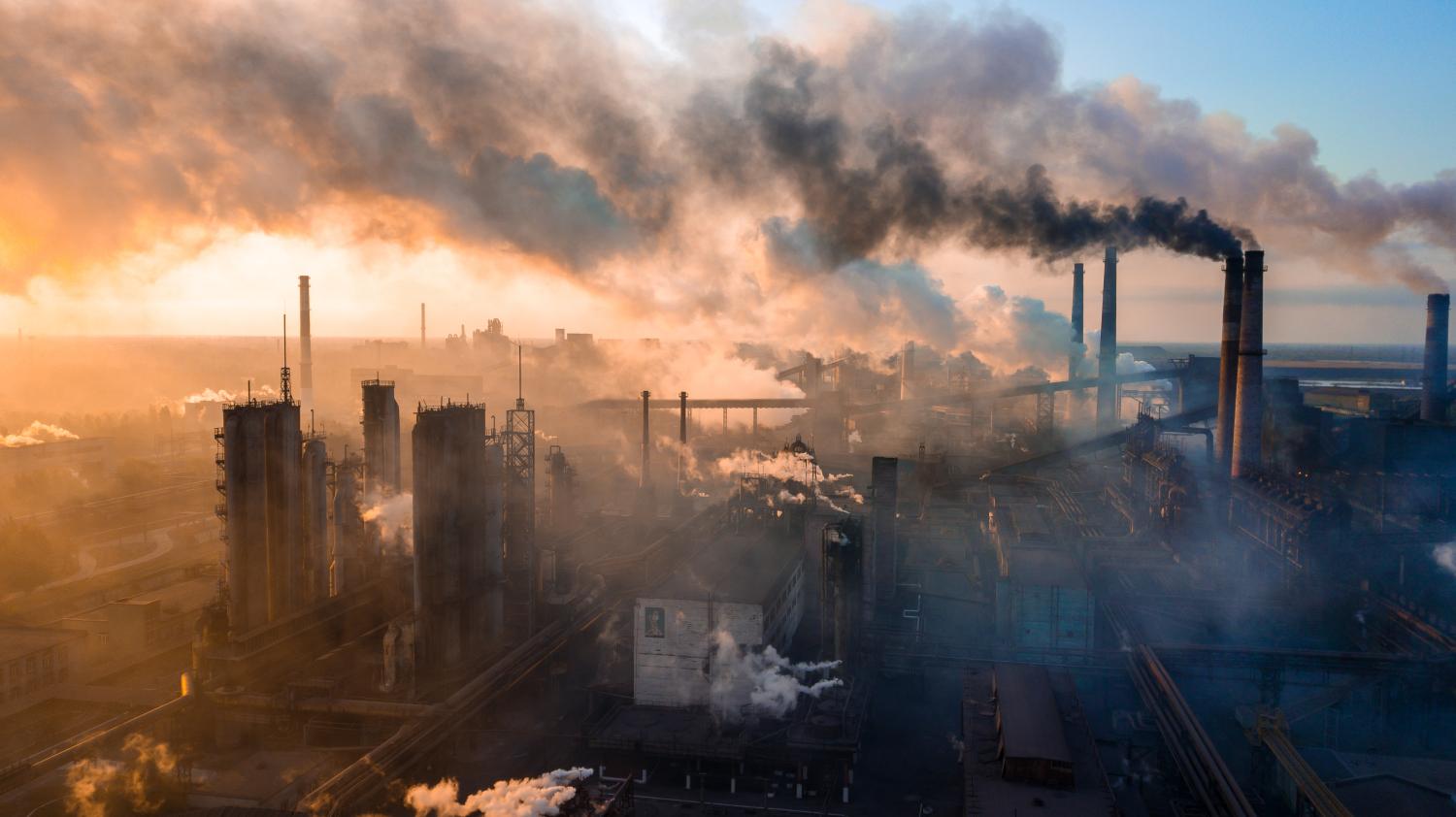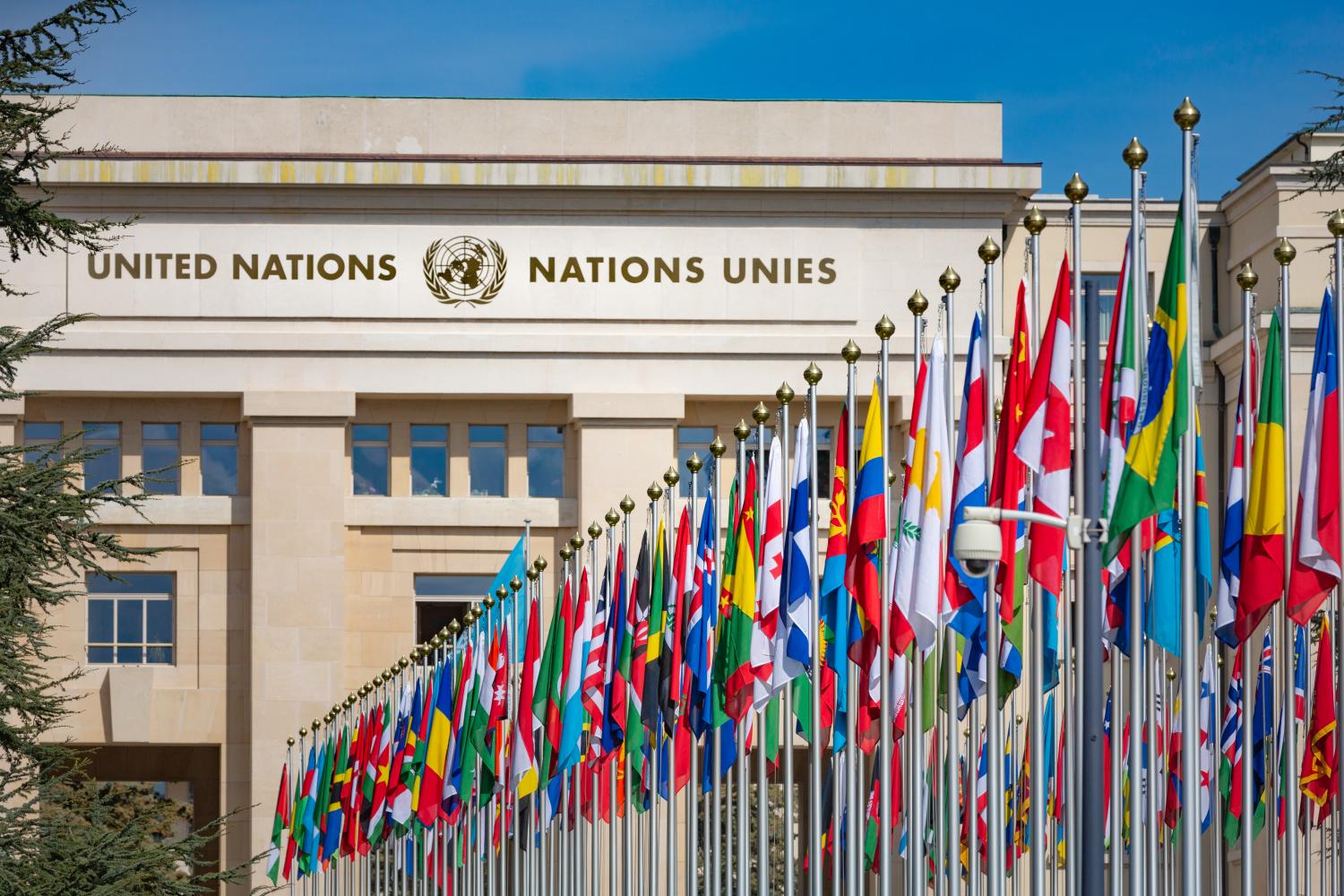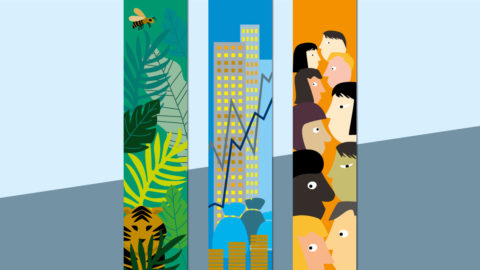Here to stay
A brief history of sustainability
Sustainability has become a ubiquitous catchword in recent years. We read it in the news and hear it in TV adverts. However, it is not always clear whether the word ‘sustainable’ is being used because a product, idea or process genuinely fits the bill, or whether someone is using it as a label or hollow phrase because sustainability is currently fashionable. After all, the concept of sustainability embraces far more than just ‘in some way environmentally friendly’.
Sustainability as an economic principle

From a historical perspective, sustainability is not an entirely new concept, neither is sustainable thinking a phenomenon of the early 21st century. Our contemporary understanding of sustainability dates back to the 1970s.
The term and the concept are, however, far older. In fact, the word ‘nachhaltend’ (German for “sustainable”) first appeared as long ago as 1713. In his function as Saxony’s chief mining administrator, Hans Carl von Carlowitz (1645–1714) was concerned about the shortage of wood as a raw material, which is essential for mining, and asked ‘how conservation and cultivation of timber can be accomplished in such a way that there is continuous, steady and sustainable usage / because it is an indispensable thing / without which the land cannot maintain its essence.’
The answer to this question: we should treat our woodlands with care and ensure a balance between deforestation and regrowth. The sustainability concept in a nutshell: manage your consumption in such a way that resources do not dry up. This principle became firmly anchored in forestry in the course of the 18th century, and subsequent generations of foresters have been trained with this in mind. Later, the concept of the sustainable use of resources was transposed to other economic sectors too, for example fishery, where the principle of ‘maximum sustainable yield’ dictates that only as much fish should be caught that the stock can remain sustainable. However, sustainable thinking was primarily limited to the economic sphere until the mid-20th century.
The 1970s and a change in thinking

In the 1970s, topics such as environmental pollution, destruction of habitats and scarcity of resources came to the fore, both among the population and in scientific discourse as well as in national and international politics. Reasons for this included soaring consumption of fossil fuels in the post-war period, increasing air and water pollution, the oil crisis of 1973, which raised awareness of our dependence on oil as a raw material, as well as environmental disasters, such as tanker or oil rig accidents, fish dying in the Middle Rhine in 1969 or the Seveso disaster in Italy in 1976, where the highly toxic dioxin TCDD was released following a chemical accident and led to contaminated plants, animals dying in huge numbers and people having to be evacuated.
Environmental movements, whose roots can mostly be traced back to the protests of 1968, entered the scene – such as the anti-nuclear movement. BUND (Friends of the Earth Germany) and Greenpeace were also founded in this decade (in 1975 and 1979 respectively).
Then there was science, which got to grips with environment and sustainability in greater depth. ‘Limits to Growth’, a report commissioned by the “Club of Rome”, left an especially powerful impression. After calculating a model of the future of humanity, the authors arrived at the following conclusion: ‘If the present growth trends in world population, industrialisation, pollution, food production and resource depletion continue unchanged, the limits to growth on this planet will be reached sometime within the next one hundred years.’
Departing from the growth paradigm towards an economy geared to the ecological resources available was, in the authors’ view, the only chance to prevent economic collapse and – far more crucially – to preserve humanity’s longevity. Updates 20, 30 and 40 years after the first report warned equally as vigorously against ‘business as usual’.
Read more
- Caradonna, Jeremy L. (2016): Sustainability. A History. New York: Oxford University Press.
- Grober, Ulrich (2010): Die Entdeckung der Nachhaltigkeit. Kulturgeschichte eines Begriffs. München: Kunstmann.
- Grober, Ulrich (2018): „Eternal forest, sustainable use“. In: Caradonna, Jeremy L. (ed.): Routledge Handbook of the History of Sustainability. London, New York. Routledge.
- Grunwald, Armin / Jürgen Kopfmüller (2012): Nachhaltigkeit. Frankfurt; New York: campus.
- Heinrichs, Harald / Gerd Michelsen: Nachhaltigkeitswissenschaften. Berlin, Heidelberg: Springer-Verlag.
- Kropp, Ariane (2019): Grundlagen der Nachhaltigen Entwicklung. Handlungsmöglichkeiten und Strategien zur Umsetzung. Wiesbaden: Springer.
- Michelsen, Gerd / Maik Adomßent (2014): „Nachhaltige Entwicklung: Hintergründe und Zusammenhänge.“ In: Heinrichs, Harald / Gerd Michelsen: Nachhaltigkeitswissenschaften. Berlin, Heidelberg: Springer-Verlag.
- Pufé, Iris (2017): Nachhaltigkeit. Konstanz / München: UVK Verlagsgesellschaft.
Schumacher, Ernst Friedrich (19952): Small is Beautiful – Die Rückkehr zum menschlichen Maß. Heidelberg: Verlag C.F. Müller.
The realisation that not only individual areas such as forests or fish stocks must be seen as an economic resource and taken care of accordingly was also underlined in the early 1970s by economist Ernst Friedrich Schumacher, who was born in Germany and later lived in Great Britain, in his book Small is Beautiful – A Study of Economics As If People Mattered: ‘The illusion of unlimited powers, nourished by astonishing scientific and technological achievements, has produced the concurrent illusion of having solved the problem of production. The latter illusion is based on the failure to distinguish between income and capital where this distinction matters most. Every economist and businessperson is familiar with the distinction, and applies it conscientiously and with considerable subtlety to all economic affairs – except where it really matters: namely, the irreplaceable capital which humankind has not made, but simply found, and without which they can do nothing. A businessperson would not consider a firm to have solved its problems of production and to have achieved viability if they saw that it was rapidly consuming its capital. How, then, could we overlook this vital fact when it comes to that very big firm, the economy of Earth and, in particular, the economies of its rich passengers?’
A change in thinking towards a sustainable and protective use of our planet could also be seen in politics. From the 1970s onwards, a growing number of conferences on the subject took place at national and international level, for example the UN’s first international environment conference in 1972 in Stockholm, at which the United Nations Environment Programme (UNEP) was adopted.
With the Stockholm Conference and other initiatives in the 1970s, attention increasingly focused on poverty and the associated problems as a cause of environmental pollution and degradation. In the words of the Stockholm Conference: “Poverty is the greatest polluter.” At this point, the social dimension and the realisation that protecting the environment is inextricably linked to improving living conditions and education for poor population groups found their way into sustainable thinking.

In 1983, the World Commission on Environment and Development of the United Nations was founded under the chairmanship of Gro Harlem Brundtland, the then prime minister of Norway. Four years later, the commission, meanwhile known as the Brundtland Commission, published a report from which a basic definition of the term sustainable development originates that is still often quoted today: ‘Sustainable development is development that meets the needs of the present without compromising the ability of future generations to meet their own needs.’
Further developments to date
In the following decades, an international political discussion developed on how to achieve sustainability. Important milestones in this context were: the Earth Summit, more precisely the United Nations Conference on Environment and Development (UNCED) in Rio de Janeiro in 1992, which resulted in Agenda 21; the Kyoto Protocol, an international, legally binding environmental treaty (resolution in 1997, entry into force in 2005); the adoption of what are referred to as the Millennium Development Goals (MDGs) at the 55th United Nations General Assembly in 2000; their further development as the Sustainable Development Goals within the 2030 Agenda (2015); the Paris Agreement on climate change of 2015, which calls for a limiting of human-induced global warming to under 2 °C; the UN Climate Change Conference of the Parties (COP) in Glasgow in 2021.
The economic aspect, the ecological idea and the social dimension are the quintessential elements of sustainability and often referred to as the ‘pillars of sustainability’.
Are we now, after sustainability has been thought about and discussed at such length and in such depth, and now that the term, and perhaps even the concept, is omnipresent, finally a little bit closer to saving the world? Unfortunately, we are still a long way away from genuine sustainability. Rather, we currently find ourselves in a process of sustainable development, at the end of which we will hopefully have reached a state of sustainable living in which the three dimensions of sustainability are well balanced. To continue in the right direction along this path, we need to realise and be conscious of what it means to act sustainably because new challenges emerge with every social change, and these must be tackled.
About the authors
Katrin Götz-Votteler holds a doctorate in English and works at the Central Institute for Scientific Reflection and Key Qualifications (ZiWiS), where she is concerned with the communication and social acceptance of science-related topics.
Simone Hespers received her doctorate in art history and works at ZiWiS on current socially relevant topics, especially from the perspective of visuality.
FAU research magazine friedrich

This article first appeared in our research magazine friedrich. You can order the print issue (only available in German) free of charge at presse@fau.de.
All articles
